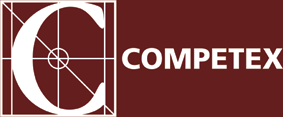VAT Flat Rate Scheme (FRS)
Read the Flat rate VAT notice 733 guidance on the HMRC website.
How FRS works
Under the VAT Flat Rate Scheme, you charge your client standard-rate VAT in the normal way but,
instead of claiming VAT on purchases and paying the net amount to HMRC, you apply a fixed percentage to the total sales turnover (including VAT) to arrive at the amount of VAT payable to HMRC. For example:
- If your agreed flat rate is 16.5% and you invoice your client for fees of £10,000 (plus £2,000 VAT), the VAT payable to HMRC will be £12,000 x 16.5% = £1,980.00. This means that you retain £20 of VAT.
Please note that under FRS you may not claim back VAT on purchases unless you have bought capital assets where the invoice value is £2,000 or more (including VAT). This means that it may not be beneficial to register for FRS if you normally have a high level of purchases which have incurred VAT.
Selecting the appropriate FRS rate
You will need to determine which FRS rate is applicable to your particular business.
Please check the list on the HMRC website and select the most relevant category for your business.
As an example, the rates for the consultancy sector are:
- 14% – Management consultancy (including financial consultancy and business consultancy)
- 14.5% – Computer and IT consultancy
- 16.5% – Limited Cost Trader (see below)
Please note that HMRC offers a 1% reduction in the flat rate in the first year of VAT registration. The full rate is applicable thereafter. You may therefore wish to consider registering for the flat rate scheme in your first year of registration only.
Limited Cost Trader category
In the Autumn 2016 Statement, the Chancellor announced potentially costly changes which will affect businesses which have a very low cost base. These businesses are now called ‘limited cost traders’.
A limited cost trader is defined as one that spends less than 2% of its sales on goods (not services) in a company’s financial year.
Limited cost traders can still use the Flat Rate Scheme, but their percentage will be fixed at 16.5%. So if they sell £1,200 of services, including £200 of VAT, the flat rate amount due will be £198.00 (£1,200 x 16.5%).
When working out the amount spent, it cannot include purchases of:
- Capital goods (such as new equipment used in a business)
- Food and drink (such as lunches for staff)
- Vehicles or parts for vehicles and fuel (unless running a vehicle hiring business)
A firm will also be a limited cost trader if it spends less than £1,000 a year, even if this is more than 2% of the firm’s turnover on goods.
Will this affect you?
It will increase the flat rate VAT paid by labour-intensive businesses where very little is spent on goods. This is likely to affect IT contractors, interim managers and management consultants.
If you think the new 16.5% rate will apply to you, then the VAT flat rate scheme is unlikely to continue to produce a financial advantage over the standard scheme.
As an example, for net turnover of £100,000 the VAT you will get to retain will be only £200, which is probably less than the VAT you could recover using the standard scheme. The standard VAT scheme enables you to recover all VAT incurred on expenses and purchases. The only likely reason to stay with the VAT flat rate scheme is its simplicity and the fact you do not have to record the VAT incurred on every expense and purchase (with perhaps an enhanced possibility of errors).
There is more detailed information about these changes in sections 8.2 and 9.7 of the newly updated HMRC leaflet on the Flat Rate Scheme.
Charging VAT on sales in EU countries
Business to business sales of services to other EU countries are deemed to take place where the
customer belongs and therefore are outside the scope of UK VAT. These sales must be dealt with
under the reverse charge mechanism. If your customer has multiple establishments then the place of supply is the place that benefits the most from the services provided. The customer has to declare and pay the VAT in their own country.
The reverse charge mechanism means that your invoices must not have any VAT on them but state
‘Subject to reverse charge: customer to pay the VAT’. It must also have the company VAT registration number preceded by GB and your customer’s VAT registration number preceded by their country code.
You must submit an EC sales list to HMRC each quarter, in addition to submitting your VAT return to HMRC. You will need to register online to do this and the EC sales list must be completed within 14 days of the quarter end.
If you are using the FRS scheme, these sales are excluded from Box 6 on your VAT return.
FRS and IR35
If your contract is caught by the IR35 legislation and you are registered under FRS, you must ensure that the correct rate is included on our template for calculating salary under IR35.
KNOWLEDGE ZONE
FORM A COMPANY TODAY
Form a limited company in 24 hours online with Competex.
FORM A COMPANY
